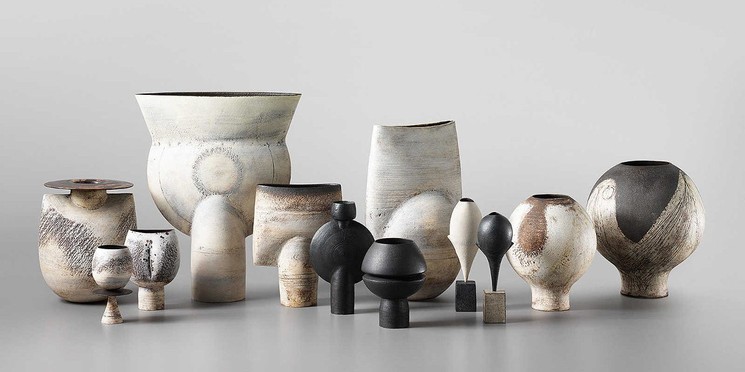
Biography
Hans Coper (1920–1981) was a seminal figure in modern British ceramics, known for his sculptural approach and minimalist forms. A Jewish refugee from Nazi Germany, he arrived in the UK in 1939 and began working with Lucie Rie in 1946, despite no prior training in ceramics. Their collaboration broke with utilitarian traditions, introducing a bold, abstract aesthetic that redefined studio pottery in post-war Britain.
In 1958, Coper established his own studio at Digswell House, where he developed iconic forms such as the Spade, Bud, Egg, and Arrow. His pieces, often finished with manganese oxide, combine functional shapes with monumentality, influenced by Cycladic art and primitive forms. His best-known commissions include the seven-foot candlesticks for Coventry Cathedral’s altar and three large-scale ceramic murals, which will be shown together for the first time in 2025 at Hans Coper: Resurface in Winchester.
Coper taught at the Camberwell School of Art and the Royal College of Art, shaping a generation of ceramic artists. His works are held in major museum collections, including the V&A, Metropolitan Museum of Art, and Ashmolean Museum, which celebrated his centenary with a major retrospective in 2020. Today, his ceramics remain highly sought after in the international art market for their formal innovation and timeless elegance.
Nationality